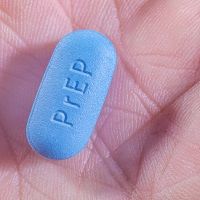Article
HIV Prevention Opportunities Missed for Black, Hispanic, Women Patients
Author(s):
Investigators analyzed data from PrEP-eligible patients at the New York City Health + Hospital/Bellevue which showed that women and minority patients were less likely to be prescribed PrEP for HIV prevention.

Investigators analyzing data from an urban hospital center identified significant missed opportunities for preventing HIV through the prescription of pre-exposure prophylaxis (PrEP) for patients with a documented sexually transmitted infection. Just 2.1% of patients with ≥1 STI were prescribed.
Among Black and Hispanic patients, as well as women, the rates of PrEP prescription were even lower. No women or Black patients were prescribed the prophylactic and just 7 of 498 Hispanic patients were given prescriptions.
“Despite tremendous success in PrEP rollout, disparities in uptake have emerged among patient populations at greatest risk for infection in NYC, especially among people of color,” wrote poster authors, led by Robert Pitts, MD, Division of Infectious Disease, NYC Health + Hospitals/Bellevue Hospital, New York.
Investigators used retrospective data from all patients tested for HIV at least once while accessing care at NYC Health + Hospital/Bellevue between January 1, 2014 and July 30, 2017. Patients who were at least 18 years of age, had an initial negative HIV antibody test, and a positive STI test for chlamydia, gonorrhea, and/or syphilis were included.
Of all 1186 PrEP-eligible patients—those who had at least one STI diagnosis—2.2% (n = 27) were given at least one PrEP prescription. White patients were 4.7 times (95% CI 1.62-13.68) more likely to received PrEP prescriptions than Hispanic or Latino patients.
The authors noted that while there were significant gaps in coverage, when patients eligible for PrEP were given prescriptions and engaged in care, most remained involved through repeated visits and prescription renewals.
“Despite progress towards ending the HIV epidemic, challenges remain in the dissemination PrEP by both patients and providers,” wrote poster authors. “The present study demonstrates that there is a large pool of persons with STIs, women, and non-white ethnicities, for whom PrEP can be an important prevention strategy but who are not receiving it.”
The poster presentation, “Potential use of Sexually Transmitted Infection (STI) Testing for Expanding HIV Pre-Exposure Prophylaxis (PrEP) at an Urban Hospital Center,” was given at ID Week 2018 in San Francisco, California.





